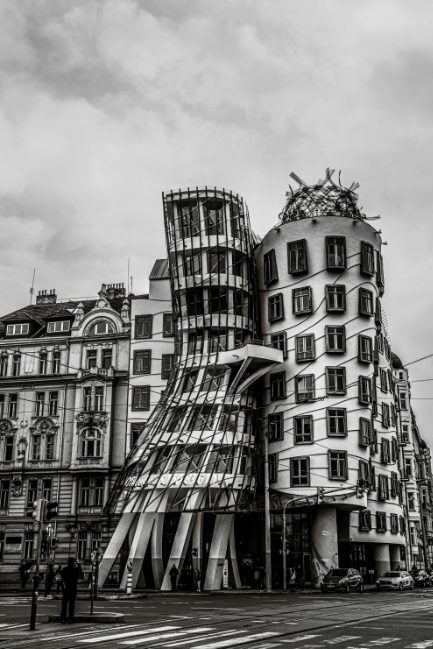Postmodern architecture is a style that emerged in the mid-to-late 20th century as a reaction against the perceived limitations and principles of modernism. It is characterized by a departure from the strict functionalism and minimalism of modernist architecture, embracing a more eclectic, playful, and often whimsical approach to design. Postmodern architecture incorporates historical references, diverse forms, and a focus on individual expression.

Key characteristics of postmodern architecture include:
- Historical References:
- Postmodern architecture often incorporates historical elements and references from various architectural styles, such as classical, Gothic, and regional vernacular architecture. These references may be used in a playful or ironic manner.
- Eclecticism:
- A rejection of the strict adherence to a single style or set of principles. Postmodern buildings may combine elements from different architectural traditions, creating a visually eclectic and diverse aesthetic.
- Use of Color:
- Unlike the often monochromatic palette of modernism, postmodern architecture embraces bold and vibrant colors. Color is used to enhance the visual impact and playfulness of the design.
- Asymmetry and Irregular Forms:
- Postmodern buildings frequently feature asymmetrical designs and irregular shapes. Architects intentionally deviate from the clean lines and geometric rigor associated with modernism.
- Historical Elements with a Twist:
- Classical columns, arches, and other traditional architectural elements may be used in a non-traditional way or combined with elements from different periods, creating a sense of irony or playfulness.
- Quotation and Pastiche:
- Architects often “quote” or reference historical architectural forms in a playful or ironic manner. Pastiche, or the borrowing of various styles, is a common feature.
- Decorative Ornamentation:
- Postmodern architecture may reintroduce decorative elements and ornamentation, which were often eschewed in modernism. This includes the use of sculptural forms and decorative detailing.
- Cultural References:
- Postmodern architects draw inspiration from a wide range of cultural sources, including art, literature, and popular culture. The designs may reflect a broader cultural context.
- Regionalism:
- Embracing local and regional architectural traditions and adapting them in new and creative ways. Postmodern buildings often reflect a sense of place.
- Critique of Modernism:
- Postmodern architecture is, in part, a response to the perceived failures and limitations of modernism. It questions the idea of a single, universal style and emphasizes the importance of context, history, and individual expression.
Prominent architects associated with postmodernism include Robert Venturi, Denise Scott Brown, Michael Graves, Charles Moore, and Frank Gehry, among others. The movement had a significant impact on the architectural landscape, leaving a legacy of visually striking and diverse buildings that challenge traditional notions of architectural form and style.

